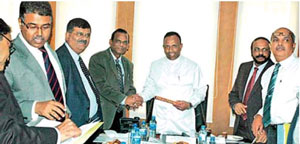16 Aug 2012 - {{hitsCtrl.values.hits}}
 In its first-ever official level discussions with Sri Lanka on the proposed pharmaceutical manufacturing hub, which has now excited the Lankan private sector, India has given a strong, structured recommendation on the way forward for Sri Lanka’s dream: ‘Focus on the huge global market first’.
In its first-ever official level discussions with Sri Lanka on the proposed pharmaceutical manufacturing hub, which has now excited the Lankan private sector, India has given a strong, structured recommendation on the way forward for Sri Lanka’s dream: ‘Focus on the huge global market first’.
03 Jan 2025 6 hours ago
03 Jan 2025 7 hours ago
03 Jan 2025 9 hours ago
03 Jan 2025 9 hours ago
03 Jan 2025 03 Jan 2025